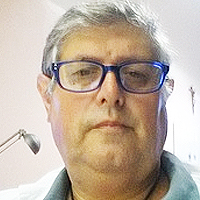Minimally invasive cytoreductive surgery in advanced ovarian cancer: A nonselected consecutive series of robotic-assisted cases
Published on: 28th April, 2023
The gold standard for advanced-stage ovarian cancer surgery entails exploration via a midline vertical laparotomy. Studies have shown that minimally invasive surgery (MIS) can be a safe and effective method for the surgical management of early ovarian cancer. In some cases, MIS can also be selectively used for cytoreductive surgery in cases with advanced-stage ovarian cancer. The robotic platform has the potential to provide similar outcomes to the laparotomy-based standard of care in advanced complex surgery while accelerating recovery, minimizing morbidity, and reducing perioperative complications. The primary objective of this study was to evaluate surgical and perioperative outcomes in patients with advanced ovarian carcinoma who underwent robotic-assisted cytoreduction. A chart review of a nonselected consecutive series of all patients undergoing surgical management of advanced ovarian cancer between 7/1/2017 and 12/31/2021 was conducted. All patients that were diagnosed with Stage III to IV ovarian cancer between the timeframe underwent robotic-assisted cytoreductive surgery at two urban community teaching hospitals in Los Angeles. Twenty-five patients were identified and included in this study. All surgeries were performed by a single surgeon. Optimal or complete CRS was achieved in 96% of the patients (24 of 25 cases). Seven (28%) underwent primary cytoreduction (PCRS) and 18 (72%) underwent interval cytoreduction (ICRS). The estimated median blood loss was 100 mL (25-500 mL), the median operative time was 5.9 hours (3.1-10.5 hours), and the conversion rate to open laparotomy was 0%. There were no intraoperative complications and the readmission rate within 30 days was 4% (1 patient) for ileus, which was managed conservatively. Currently, 64% of the patients in the case series remain alive. The median survival has not been reached. The median follow-up is 4.08 years. Results presented from this nonselected, consecutive case series illustrate how a minimally invasive robotic approach can be safely used in place of the standard exploratory laparotomy for ovarian cytoreduction.
The Outcome of Patients with Leukemia Presenting with Hyperleukocytosis Requiring Leukapheresis. The Experience of King Fahad Specialist Hospital in Dammam, Saudi Arabia
Published on: 15th March, 2024
Background: Patients with acute and chronic leukemia presenting with hyperleukocytosis are at risk of developing leukostasis which has serious and life-threatening complications. Leukapheresis is usually performed to reduce the complications of leukostasis in patients presenting with hyperleukocytosis and clinical manifestations compatible with leukostasis. Methods and materials: A retrospective study of patients with acute and chronic leukemia who received leukapheresis for hyperleukocytosis between the 1st of January 2013 and the 31st of December 2023 at King Fahad Specialist Hospital (KFSH) in Dammam, Saudi Arabia was performed. Results: Over a period of 11 years, a total of 50 patients with acute and chronic leukemia presenting with hyperleukocytosis and clinical manifestations of leukostasis; 32 patients with acute leukemia (AL) and 18 patients with chronic myeloid leukemia (CML); received leukapheresis at our institution. Among the 32 patients with AL who received leukapheresis, 24 patients (75%) had acute myeloid leukemia (AML), 7 patients (21.88%) had acute lymphoblastic leukemia (ALL) and 1 patient (3.13%) had bilineage acute leukemia (BAL). At presentation of their AL: 3 patients (9.38%) had fever, 9 patients (28.13%) had infections, 4 patients (12.5%) had palpable spleen or liver, 6 patients (18.75%) had palpable external lymph nodes, and 9 patients (28.13%) had extramedullary disease (EMD). After receiving induction and consolidation cycles of chemotherapy, 11 patients (34.38%) of AL patients received allogeneic hematopoietic stem cell transplantation (HSCT). At the end of the follow-up, 17 patients (53.1%) with AL were alive while 15 patients (46.9%) were dead. The 8-year overall survival (OS) for all patients with AL subjected to leukapheresis was 47%. The 5 years OS for patients with AL who subsequently received HSCT and those who did not receive allogeneic HSCT were 70% and 40% respectively. The mean white blood cell (WBC) count of CML patients subjected to leukapheresis was 465.5 × 109/L, 11 patients (61.11%) had clear signs of leukostasis, and 8 patients (44.44%) had splenomegaly at presentation. Regarding the disease stage at presentation, 14 CML patients (77.78%) had chronic phase (CP), 2 patients (11.11%) had accelerated phase (AP) and 2 patients (11.11%) had blast phase (BP). Regarding the fate of CML patients at the end of the study were: 15 (83.33%) were alive, 1 (5.56%) dead, and 2 (11.11%) were unknown as they lost follow-up. However, the 10-year OS of patients with CML subjected to leukapheresis was 90%. Conclusion: Patients with acute or chronic leukemia presenting with hyperleukocytosis and either ongoing or impending leukostasis should have urgent cytoreductive chemotherapy and leukapheresis to prevent life-threatening complications. Although the outcome of AL patients presenting with leukostasis is generally poor, prompt cytoreductive therapy and leukapheresis, followed by induction chemotherapy and allogeneic HSCT may improve the outcome. Also, urgent cytoreduction including leukapheresis improves the outcome of patients with CML presenting with hyperleukocytosis and leukostasis.




